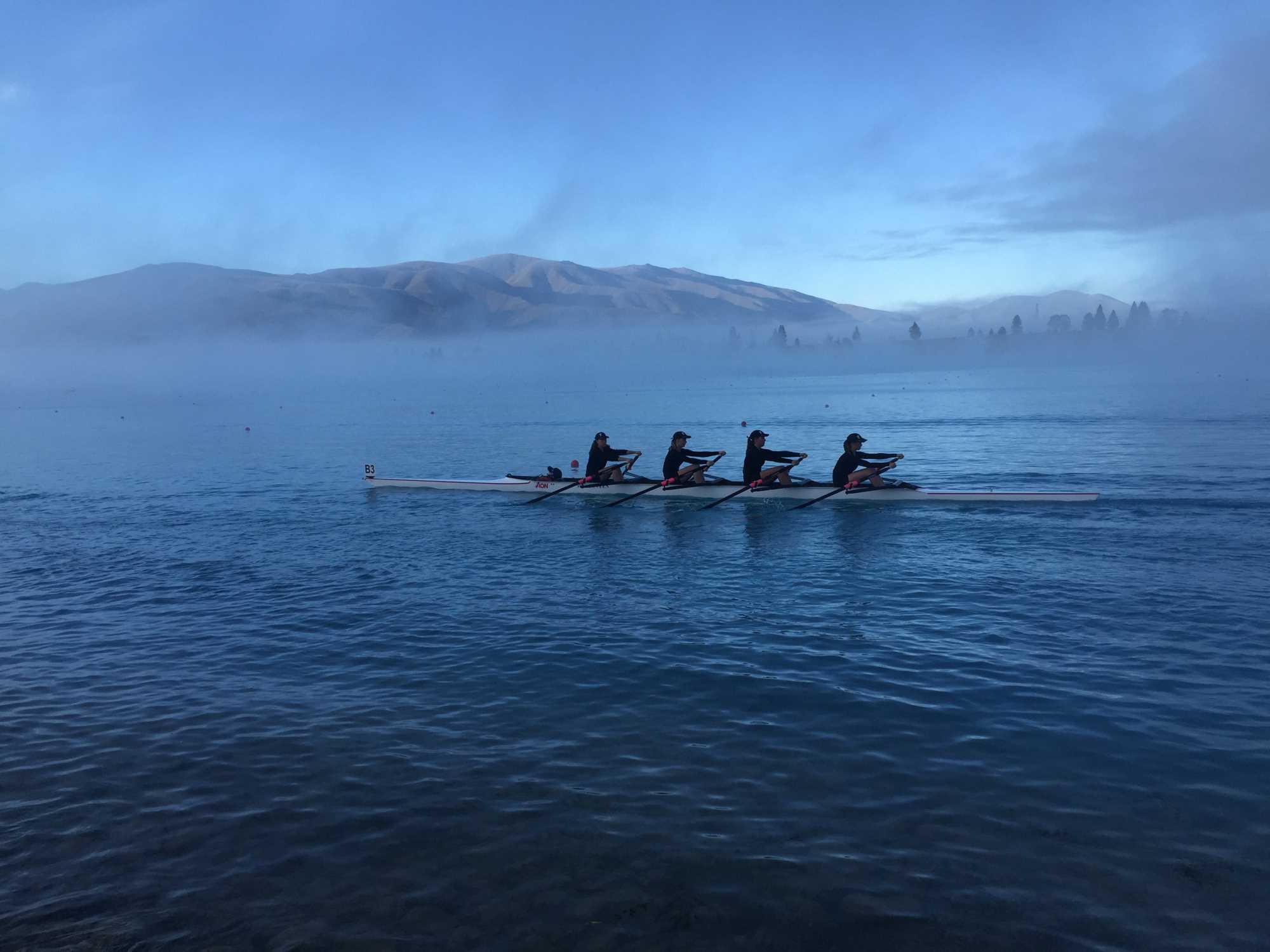Glossary of Rowing Terms
Novices or Novicing
Rowers who are rowing for their first year, or a rower who has not won a qualifying regatta
Sculler
A rower who rows with two oars, one in each hand.
Sweep
A style of rowing in which each rower uses one oar.
Coxswain or "cox"
The oar-less crew-member, usually included, who is responsible for steering and race strategy. The coxswain either sits in the stern or lies in the bow of the boat, and faces in the direction of travel.
Bowside
Any sweep rower who rows with the oar on the bowside (usually, the right or starboard side) of the boat.
Strokeside
Any sweep rower who rows with the oar on the Strokeside (usually, the left or port side) of the boat.
Launch
A motorboat used by rowing instructors, coaches or umpires. Referred to as a "coach boat" .
The commands
"At the catch"
Command to tell the rowers to put their oars in water in preparation to start rowing.
"Ahead" or "Look Ahead"
Command shouted by a crew about to be overtaken by another crew, telling the overtaking crew of their presence.
" row on"
Tells the rowers to row until told to stop –e.g. “Two, hit it...”
"Back it down"
To have the rowers place their blades at the release position, squared, and push the oar handle towards the stern of the boat. This motion causes the shell to move backwards.
"Drop"
Used to tell the rowers to place their blades back on the water after performing an easy-all.
"Blades in (side)"
Tell the rowers on one side to pull their blades in, in order to prevent hitting an object or another boat in the water, or to let another crew pass on a narrow river.
"Check the boat" or "hold water"
Square the oars in the water to stop the boat.
"Easy" (or "easy there")
To stop rowing .
"push for 10" (or "power ten")
Commands the crew to row 10 strokes of effort. It is frequently given when a crew is attempting to pass another boat.
"Hands on"
Tells the rowers to grab the boat next to their seats, so that the boat can be moved.
"Ready to push"
Tells the rowers to grab the pontoon in preparation for leaving.
"Hard on port/starboard" (or "port/starboard pressure")
The rowers on that side of the boat must row harder (and the opposite side must row slightly easier) in order to facilitate a sharper turn.
"to Heads, ready, up"
Tells the rowers to press the boat above their heads.
"Hold it hard" or "Hold up hard" or "Stop the Boat"
Emergency stop.
"Hold Water"
It instructs the rowers to square their blades in the water to stop the boat.
"In 2..."
Most water commands are appended prior to the command to take place after two strokes. For example, "In 2, Power 10"
"hands on"
Command given telling the athletes to go to their stations and grab a hold of the boat.
"Let it run"
To stop rowing after a given piece of on the water rowing length, but to put the handles of the oars either to the gunwales or out in front of the rower, in such a manner that the oar paddles are parallel to the water yet not touching it. This allows the boat to glide for a distance leaving no paddle wake in the water. Similar, but not exactly the same is the command "Gunnel", where rowers push the oars until the handle touches the boat's gunwale.
"Paddle"
Tells a crew to row with just enough pressure to move the boat. The paddle command is also used to bring a crew down from full pressure at the end of a workout piece or race.
"Power 10" (or "10 firm" )
The command to take 10 strokes at more than full pressure. Used for passing and gaining water in a race. (sometimes "Power 5", "Power 20", or "Power 30")
"Ready all, Row"
Begin rowing.
"Roll it"
Tells the crew to flip the boat over, in unison, from above their heads.
"Shoulders, ready, up"
Tells the crew to lift the boat from any position below their shoulders, up to shoulder height. Can be reversed to lower the boat from heads to shoulders, i.e., “Shoulders, ready, down!” This is the best position for carrying a shell.
"Sit ready"
Commands the crew to move to the catch blades buried, and be ready to start the race.
"Take the run off"
To stop rowing and hold the blades at a 45 degree angle in the water to slow the boat down.
“Touch it / Touching”
A stroke where rowers use only their arms and back. Used mostly for warm-up or to turn a boat.
"On the square / Square blades rowing"
To row without feathering the blades on the recovery.
"Waist, ready, up"
Tells the crew to lift the boat to their waist.
"Watch your blades (side)"
Tells one side to look out at their blades, and take action to prevent them possibly hitting something.

 Admin Login
Admin Login